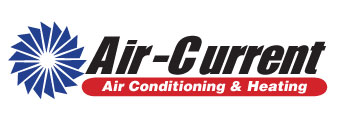
You shouldn’t be forced to compromise on comfort or empty your wallet to keep your house at a refreshing temperature during summer weather.
But what is the right temperature, exactly? We discuss recommendations from energy specialists so you can find the best temperature for your house.
Here’s what we suggest for the most energy-efficient setting for air conditioning in Houston.
Recommended Thermostat Settings for Summer
Most households find setting the thermostat at 72-73 degrees is most comfortable. However, if there’s a big difference between your interior and exterior warmth, your electricity expenses will be greater.
This is our advice based on the U.S. Department of Energy (DOE) and ENERGY STAR®.
While at home: 78 degrees. While that seems too high, there are ways you can keep your residence pleasant without having the air conditioner running constantly.
Keeping windows and window treatments down during the day keeps cold air where it should be—inside. Some window treatments, like honeycomb shades or plantation shutters, are designed to deliver extra insulation and improved energy savings.
If you have ceiling fans in your house, the DOE says you can increase thermostat temperatures about 4 degrees warmer without sacrificing comfort. That’s because they cool with a windchill effect. Since they cool people, not rooms, turn them off when you move from a room.
If 78 degrees still seems too hot on the surface, try running a trial for approximately a week. Get started by increasing your thermostat to 78 degrees while you’re at your residence. Then, steadily decrease it while following the suggestions above. You may be amazed at how comfortable you feel at a warmer temperature setting.
While away: 88 degrees. There’s no reason to keep the air conditioning running all day while your house is empty. Moving the temperature 7–10 degrees higher can save you anywhere from 5–15% on your cooling costs, according to the DOE.
When you arrive home, don’t be tempted to set your thermostat colder than 78 to cool your home faster. This isn’t useful and usually leads to a more expensive cooling bill.
A programmable thermostat is a useful method to keep your temperature controlled, but you have to set programs. If you don’t utilize programs, you run the risk of forgetting to increase the set temperature when you take off.
If you want a convenient remedy, think about getting a smart thermostat. This thermostat links with your phone, so it knows when you’re at your residence and when you’re gone. Then it instinctively adjusts temperature settings for maximum savings. How much exactly? Typically $180 yearly on heating and cooling, according to ENERGY STAR.
Another perk of having a smart thermostat? You can use your phone to watch and adjust temperature settings from just about anywhere.
While sleeping: Around 70 degrees. While ENERGY STAR suggests 82 degrees, that might be too uncomfortable for many families. The majority of people sleep better when their sleeping space is chilled, so that’s why the National Sleep Foundation recommends 60–67 degrees. But that might be too cold, based on your clothing and blanket preference.
We advise trying an equivalent test over a week, moving your temperature higher and steadily decreasing it to pick the best temp for your family. On pleasant nights, you might find keeping windows open at night and running a ceiling fan is a superior solution than running the AC.
More Approaches to Conserve Energy This Summer
There are added approaches you can spend less money on utility bills throughout hot weather.
- Buy an energy-efficient cooling system. Central air conditioners only work for about 12–15 years and get less efficient as they get older. An upgraded air conditioner can keep your residence cooler while keeping electrical bills low.
- Book yearly air conditioner maintenance. Annual air conditioner maintenance keeps your unit running properly and could help it run at better efficiency. It can also help lengthen its life cycle, since it enables techs to find seemingly insignificant issues before they lead to a major meltdown.
- Replace air filters frequently. Use manufacturer instructions for switching your air filter. A clogged filter can cause your system to short cycle, or switch on and off too often, and increase your electrical.
- Inspect attic insulation levels. Almost 90% of residences in the USA don’t have proper insulation, according to the Insulation Institute. Many southern climates require 13–14” of attic insulation, while northern climates require 16–18”.
- Have your ductwork examined. Ductwork that has loosened over time can leak cool air into your attic, walls or crawl space. This can result in big comfort problems in your residence, including hot and cold spots.
- Seal holes, doors and windows. Keep humid air where it belongs by sealing openings. You can also caulk or weather strip doors to seal more conditioned air inside.
Use Less Energy This Summer with Air Current AC & Heat
If you want to use less energy during warm weather, our Air Current AC & Heat pros can assist you. Get in touch with us at 713-322-4318 or contact us online for additional info about our energy-saving cooling products.
